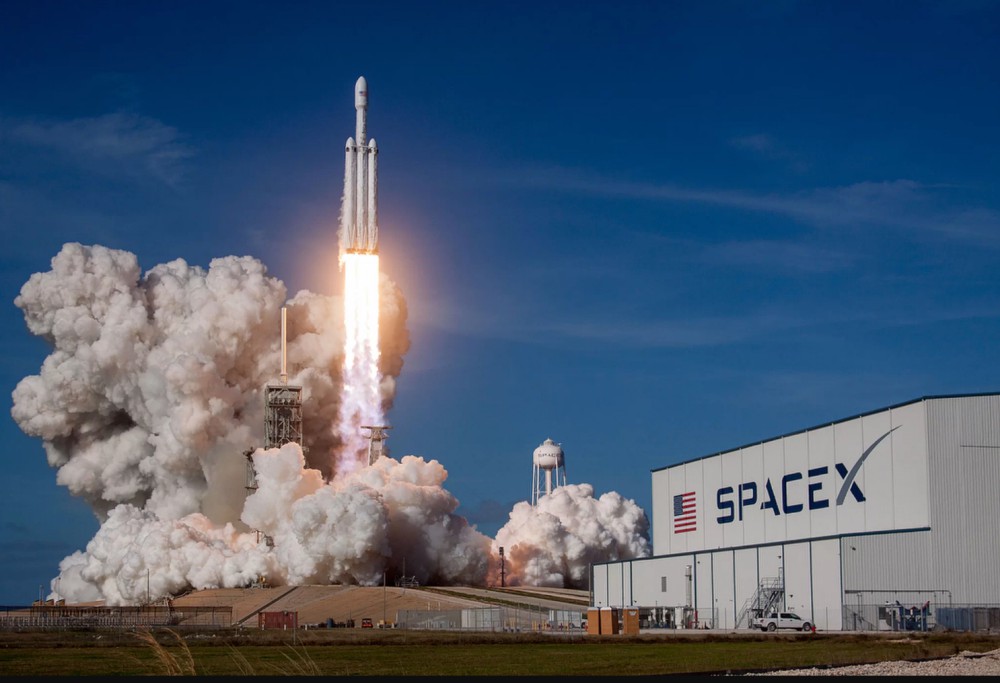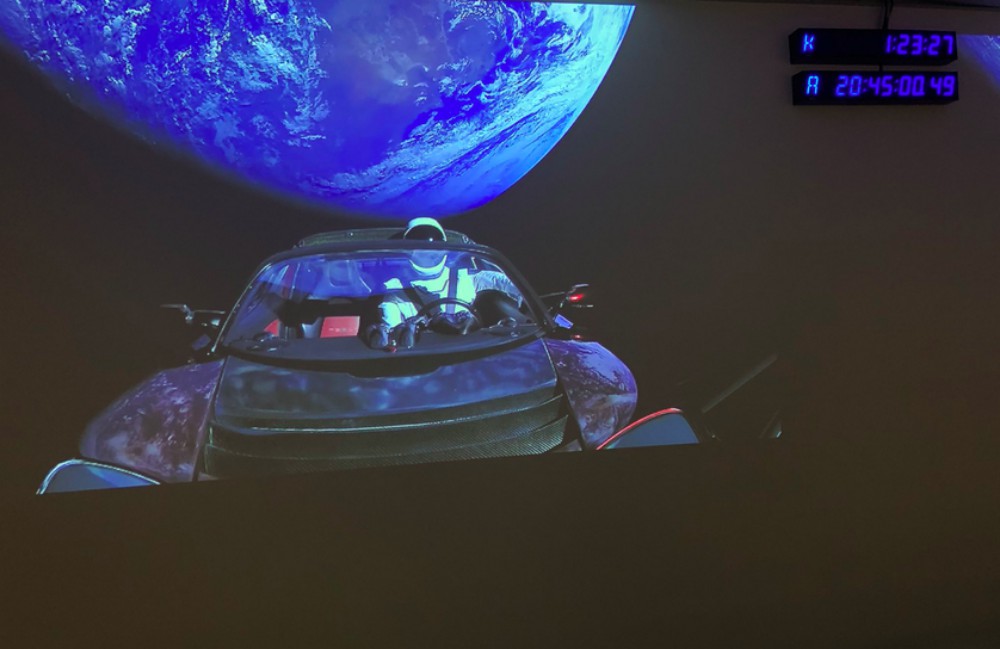The first Falcon Heavy rocket built by the private spaceflight company SpaceX soared on its maiden voyage today (Feb. 6) — a historic test flight that also sent a car toward Mars and included two confirmed booster landings. Billed as the world’s most powerful booster since NASA’s Saturn V, the Falcon Heavy rocket lifted off from Launch Pad 39A here at Kennedy Space Center (KSC) — the same site used by NASA’s Apollo moon missions and space shuttles — at 3:45 p.m. EST (2045GMT).
“I’m really excited about today,” SpaceX CEO Elon Musk told reporters after the launch. “I’m really proud of the SpaceX team. They’ve done an incredible job of creating the most advanced rocket in the world, and the biggest rocket in the world.”
Standing 23 stories tall, the Falcon Heavy rocket is SpaceX’s largest rocket yet. Its first stage is powered by three core boosters based on SpaceX’s Falcon 9 rockets, with 27 engines (nine per booster) firing in unison to produce about 5 million lbs. of thrust (22,819 kilonewtons) at liftoff. While SpaceX hoped all three boosters would return to Earth and land, the center core missed its mark – a minor hiccup in an otherwise successful launch, Musk said.
The rocket will eventually launch payloads of up to 141,000 lbs. (64,000 kilograms) into orbit. That’s about twice the payload capacity of its nearest competitor, the Delta IV Heavy, built by United Launch Alliance.
“This is a test flight,” Musk said yesterday (Feb. 5). “If the test flight works, I think we’d be ready to put satellites on the next mission.” That mission, Musk added, could occur within the next three to six months.
SpaceX’s Falcon Heavy test flight was arguably one of the most anticipated rocket launches in years,
Part of that allure is the mission’s novelty: This Falcon Heavy is the first of its kind, a new breed of reusable monster rocket.
The two side boosters of the first stage have flown before. One launched the Thaicom 8 communications satellite in May 2016, and the other lofted a Dragon cargo ship for NASA in July 2016, according to SpaceX. The center core stage was completely new for the Falcon Heavy.
In a sort of cosmic dance, the three first-stage core boosters returned to Earth much like SpaceX’s Falcon 9 rockets have in the past. Two boosters touched down at SpaceX landing sites at Cape Canaveral Air Force Station near KSC. The third was scheduled to land on SpaceX’s drone-ship landing pad “Of Course I Still Love You,” stationed in the Atlantic Ocean.
Musk said the core stage hit the Atlantic Ocean at about 200 mph after two of three engines did not fire during the descent. The crash damaged the nearby drone ship, he added.
SpaceX has now successfully landed Falcon-family rockets 24 times — three on this mission alone. (The rocket family is named after another famously reusable spaceship, the fictional Millennium Falcon from “Star Wars,” Musk has said.)
But perhaps the biggest draw of today’s launch was the Falcon Heavy’s unique payload: a Tesla Roadster riding atop the rocket’s second stage.
Musk announced in December that the “midnight cherry red” convertible, which he owns, would be the first Falcon Heavy payload. Then, on Monday, he revealed another surprise: a spacesuit-clad mannequin called “Starman”(a reference to David Bowie’s song “Starman”) in the driver’s seat, with its right hand on the wheel and left arm resting on the door.
About 28 minutes into today’s test flight, the second stage carrying the Roadster shut down its engine, ending the main phase of the Falcon Heavy test flight. If all goes well, the second stage will coast for 6 hours through Earth’s Van Allen belts, regions of extremely high radiation, and then restart its engine to send the Roadster and Starman toward Mars.
That maneuver will send the Roadster into orbit around the sun and, in turn, eventually carry the car and Starman about 248 million miles (400 million kilometers) from Earth.
“It will essentially be an Earth-Mars cycler,” Musk said, adding that the orbit should bring the Roadster near Mars. There is an “extremely tiny” chance the car could hit the Red Planet, he added.
There are three cameras on the Roadster, Musk said, adding that they should capture “epic views” during the mission.
“I’m not worried about the car,” Musk said. “It’ll be fine.”
Source: Press Release



